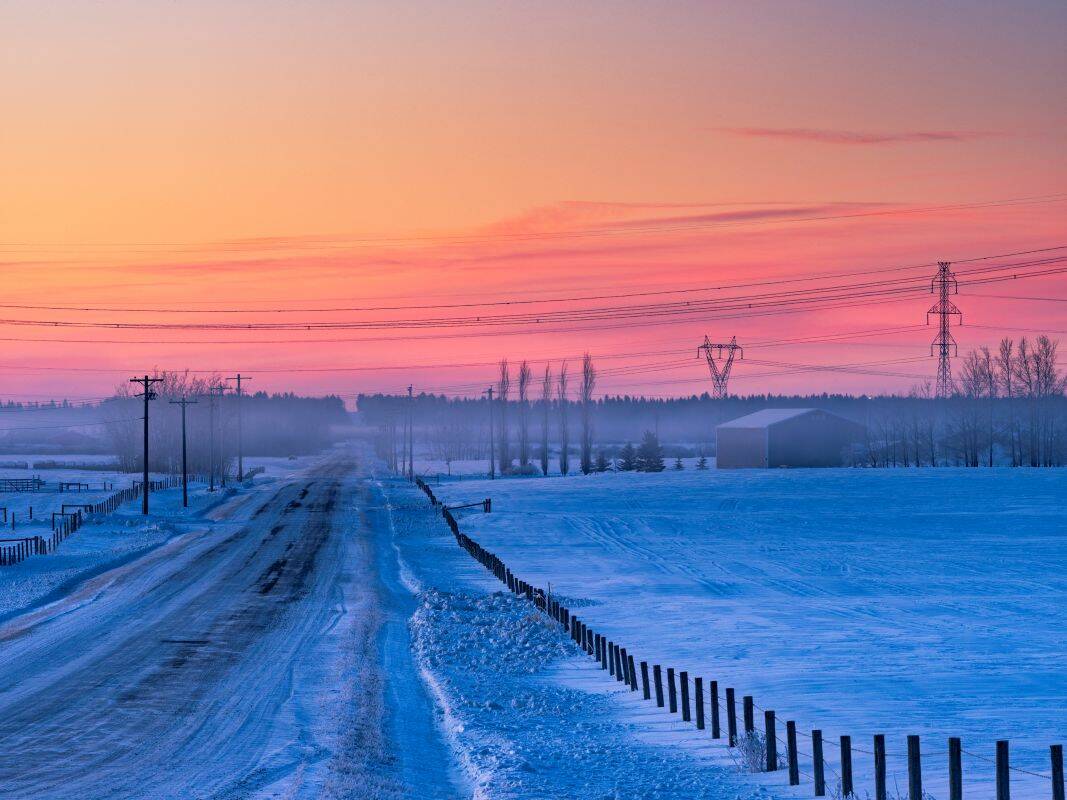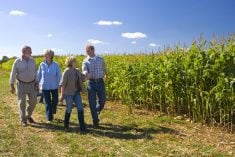It’s been like a strain of Covid that attacks the farm business. It even started about the same time as the bug, ramping up in late 2020 when farmland values really began heating up. In fact, when you looked at the FCC graphs showing the spikes in land prices across Canada over the following months, it even got to be like watching a Covid infection map, although few of us fully realized it at the time.
Wherever land prices zoomed, this new “infection” seemed sure to follow.
What were the symptoms? There were plenty, including sleepless nights, short tempers and an intense feeling of isolation. And at the heart of it all, there was real angst about succession planning.
Read Also

Winter downtime: Organize your farm records now for smoother operation
How to organize farm finances paperwork
Surely, higher net farm worths were supposed to mean you’d leave all your worries behind. Why else had you been working so hard?
Instead, they were threatening to rip our families apart.
Farms have grappled for decades with the fair-versus-equal debate. There was nothing new about that, agrees farm business and succession advisor Len Davies. It wasn’t always comfortable, but somehow, a solution got worked out to the age-old question of how do you be fair to your non-farming children while still retaining enough equity in the farm so the children who take the place over will have a chance of success.
- READ MORE: How the farm succession landscape is changing
- READ MORE: Farm succession fundamentals
For over a decade, most succession plans were framed largely on some version of giving the assets to the farming children while using life insurance and/or estate-based gifts for the non-farmers.
“It’s got beyond that now,” says Davies. “It takes new plans and new thinking now and new succession strategies or the revision of current plans… we have to get really innovative in our strategies.”
Suddenly, there are new problems, and new questions, like tougher times for non-farm kids in the city, more and more kids thinking of coming back to the farm, and most novel of all, the spiralling value of a land base that, if the farm succeeds, may never be sold.
Plus, there’s another new question that is getting asked more and more. “I almost never heard it 10 years ago,” Davies says. “Now I hear it often. Is this fair to our grandchildren?”
Fortunately, we’re a couple of years down the road and brain power has helped figure out how to put the bug back in the bottle. It looks like there are some new preventatives. You might even call them vaccines, if that isn’t too loaded a term. At the very least, that’s their goal, to stop the disease before it starts.
The vital first step
Partly, says Andrew Leach, farm business advisor at FarmLife Financial, the solutions are coming from technical business skills. Just as important, though, is that there’s been a huge advance in conceptual approach.
“Until now, too many people have been worried about how do we do succession rather than what are we trying to solve for,” Leach says. “It’s been an accounting problem… now it really is about family harmony. It isn’t just an accounting problem any more.”
There’s no denying the farm equity has shot up, he agrees. “A lot of people get hung up on that. They ask, how do we take care of the non-farming kids, how do we equalize, how do we approach fairness?”
The challenge is, if the equity all goes to the farming children, and they decide to sell, they’ll have multi-generational riches that will make them, their children and their grandchildren wealthy, while the non-farming children plod along. Today’s Mom and Dad will have split the family into two classes.
It’s the wrong problem to get hung up on, says Leach. “Having millions of dollars in your farm is very different from having millions in the bank,” he says. Without assets, the farm can’t survive. “Equal is not going to be fair to the farming kids.”
Instead, the focus is two-pronged. Technical innovations like covenants can ensure that if the farming children sell the land, the proceeds are shared with the non-farming children.
Equally important, says Leach, is the new focus on what is becoming critical in today’s succession planning. That word is “impact.”
“Are there ways we can create a bigger impact in our kids lives?” Leach asks. “People need help in different ways and at different times.”
Davies agrees. “If you set up a $2 million joint-death life insurance plan, it sounds great, but what if you live to be 100?” he asks. “Your kid may be 70. How much good is it going to do them them?”
The same goes with estate gifts, he says. “Giving them $100,000 now when they’re struggling to buy a house in town may be a lot more life-changing than giving them $2 million through the estate when you pass… besides, how much buying power will that $2 million really have by then?”
“At the very least,” says Davies, “you should ask them. You should talk about it.”
Says Leach: “Historically, we always waited until the end for equalization to happen, but if we can help our kids get into the housing market, maybe the gift is smaller but it happens today.
“We should have that conversation with them. How do I support my kids today when they need it rather than 30 years in the future when hopefully they don’t?”
Yes, it comes at a cost to the farming child, who would otherwise like to see those funds invested in the farm. Yet the consensus among the advisors Country Guide talked to for these articles is that the farm children will feel then that there is a benefit in knowing up front what they are going to be facing and when.
Other new succession strategies may include different kinds of corporate shares, giving land to the non-farming children but ensuring the farming child has access, setting up independent nest eggs for the retiring generation, and more.
Whether creating a new agreement or taking advantage of flexibility in an existing agreement, there are more options than most non-specialists can likely guess at.
It can grow to look complicated, Leach acknowledges. “We can all be afraid of complexity,” he says. “But doing nothing isn’t valid. The first thing you can control is when you start. If you keep delaying, it’s one more thing you lose control over.”
Change at the start

“The next generation is hungry,” says farm advisor Andrew Leach. “They want to see the farm progress. They see that with the financial pressures, the status quo is not really an option any more. It’s grow or go.”
Until now, that’s all that many parents would have to hear in order to put the brakes on. But, increasingly, it’s among the biggest trends in farm succession planning.
But what they want to see is changing too, and it may not be exactly what the kids expect. “The reality is, whoever is running the family farm is probably the cornerstone of that family moving forward,” Leach says. “The family farm is the foundation that those families, and the parents have to know that the son or daughter taking over for them understands that it’s not just about running the business, it’s about keeping the family strong.”
Alberta transition advisor Annessa Good-Hassard says the next generation has the capability. “The junior generation are coming out better and better operators, but still, of course, a competitive advantage will go to who’s the best manager out there. Are we putting in the time?”
Adds Leach: “Some of the fear that the parents have is that our kids don’t understand the role of being the family leaders.”
When it comes to running the business, though, there’s change there too. Today’s succession planning puts more emphasis on taking trust off the table. Older deals were done on a handshake. Today, there can be corporate agreements, signed accountabilities and structured reporting processes.
“We’re seeing some complexities,” Leach says. For the parents, there can be a big learning step getting to understand how much more plugged in today’s kids are and how much more access they have to information and to exports than the parents ever had.
“Part of the reason the next generation is pushing so hard is because they don’t have a choice,” Leach adds. “They have to keep up with inflation and the cost of supplies…. For them the fear is, they can’t have succession to come with handcuffs.”
















